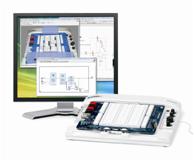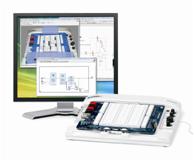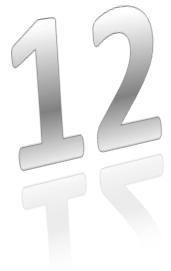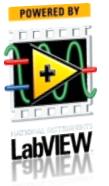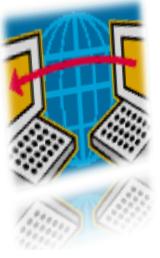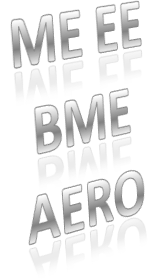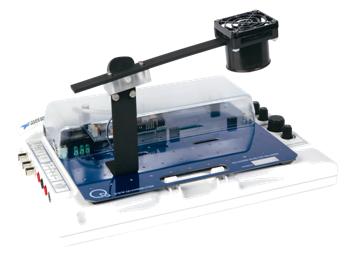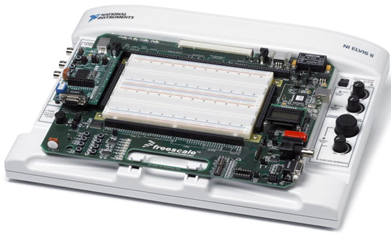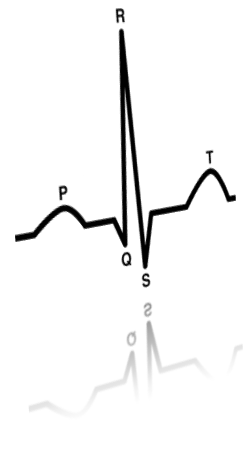Review
Now featuring a 100MS/s oscilloscope on NI ELVIS II+, exploring higher-frequency components, characterizing circuits, and investigating rise times has never been easier. Discover the top 10 reasons to consider adopting NI ELVIS, a leading educational platform, for the classroom or laboratory.
Table of Contents
- Component of the NI Electronics Education Platform
- 12 Integrated Instruments
- Powered by LabVIEW
- Distance Learning Platform
- Multidisciplinary Learning Platform
- Free Teaching Curriculum
- Control Design Concepts with Quanser
- Teach Telecommunications Concepts with Emona Instruments
- MCU/Embedded Concepts with Freescale
- Bioinstrumentation with NI ELVIS II and NI Multisim
Component of the NI Electronics Education Platform
|
|
NI ELVIS is a primary component of the NI electronics education platform along with NI Multisim, the leading tool for SPICE simulation and schematic capture, and NI LabVIEW software. The NI electronics education platform can help you teach circuit design concepts better by bridging the gap between theory and the real world. Students can simulate the theoretical concepts in Multisim, prototype the actual circuit with NI ELVIS, and compare the simulation with real-world measurements with LabVIEW and LabVIEW SignalExpress. With NI ELVIS II/II+ and Multisim 10.1 and later, learning circuits becomes more interactive with features such as 3D NI ELVIS and the ability to access the NI ELVIS instruments inside Multisim. |
» Learn more about the electronics education platform
» Buy the electronics education platform
12 Integrated Instruments
|
|
NI ELVIS includes 12 of the most commonly used laboratory instruments including an oscilloscope (scope), digital multimeter (DMM), function generator, variable power supply, dynamic signal analyzer (DSA), bode analyzer, 2- and 3-wire current-voltage analyzer, arbitrary waveform generator, digital reader/writer, and impedance analyzer in a single platform. This compact, yet powerful assortment of instruments translates into cost savings for the lab, both in terms of lab space as well as lower-maintenance costs. In addition, because NI ELVIS instruments are designed using the LabVIEW graphical system design language, educators can customize the instruments to meet their specific needs. |
Powered by LabVIEW
|
|
NI ELVIS instruments are based on the industry-leading LabVIEW graphical system design environment. LabVIEW takes a graphical block diagram and dataflow approach to programming, allowing customizable application and flexible measurement. For example, NI ELVIS instruments can be accessed inside the LabVIEW environment because they are open-sourced virtual instruments (VIs). Educators can take advantage of this feature to create custom instruments, as well as use other powerful programming features that LabVIEW provides to design, prototype, and deploy full-scale systems. |
Distance Learning Platform
|
|
Educators worldwide have successfully used NI ELVIS and LabVIEW to set up distance learning platforms. With remote panels in LabVIEW, educators can make VIs available online through the Internet, making them accessible to students everywhere and, as a result, make it easy to demonstrate concepts and perform experiments in a distance learning setting. Educators such as Dr. Barry Paton from Dalhousie University have also set up cameras to view the actual circuit on NI ELVIS, again using the Internet. |
» Read case studies on teaching with NI ELVIS
Multidisciplinary Learning Platform
|
|
NI ELVIS is an open architecture that gives leaders in other areas such as control design, MCU/embedded, digital electronics, or telecommunications the power to build add-on modules that professors can use to teach concepts. These extensions to NI ELVIS and the ease-of-use of LabVIEW software make NI ELVIS an ideal multidisciplinary engineering platform. Educators can use NI ELVIS to teach engineering concepts in circuit design, measurements and instrumentation, control design, telecommunications, and embedded design for different departments, including electrical, computer, biomedical, mechanical, aerospace, and green engineering and physics. |
» Download the NI ELVIS Plug-In Board Module Development Kit
Free Teaching Curriculum
|
|
With prewritten curriculum from universities worldwide available for free download, getting started with NI ELVIS in the classroom is a snap. Educators can also modify these labs to suit their own curriculum/laboratory exercises and further use the NI Community to share these labs and collaborate with other educators. Included with each lab are handouts as well as example VIs, where applicable. Take a look at the Introduction to NI ELVIS, Multisim, and LabVIEW courseware for a good place to start. |
Control Design Concepts with Quanser
|
|
Educators can use NI ELVIS to teach control design and simulation concepts by taking advantage of the different plug-in boards created by Quanser, a leader in control design training systems for academia. Quanser currently offers a wide range of plug-in boards for the NI ELVIS platform – the QNET DC-010 motor control, QNET-012 HVAC system, QNET-013 Vertical Take-Off and Landing actuator, QNET-014 mechatronics sensor 1 board, and the QNET-011 rotary inverted pendulum. With the included VIs and curriculum, educators can now teach the basics of control design and use real experiments to teach concepts such as PID and Root Locus. |
» View the webcast: Teaching Control Design with NI ELVIS II and Quanser QNET
» Buy the NI ELVIS II/Quanser Control Design Bundle
Teach Telecommunications Concepts with Emona Instruments
|
|
Emona Instruments takes a block diagram approach to teaching telecommunications and fiber optics concepts. The DATEx telecommunications trainer, an NI ELVIS plug-in module, provides educators with a unique, hands-on approach to teaching introductory telecommunications concepts. With DATEx, students can build live communications systems in hardware by wiring together circuit blocks using patch cables. The FOTEx offers a similar approach to the study of fiber-optics concepts, signal transmission, and signal loss. After building a circuit, students can apply the signal generation and measurement capability of LabVIEW software and the NI ELVIS platform to explore the system. The DATEx and FOTEx kits include prewritten labs that engage students with hands-on exercises that enhance their understanding of these complex topics. |
» See specifications, tutorials, and more about plug-in boards from Emona
» View pricing and purchasing information for the NI ELVIS II/Emona Bundle
MCU/Embedded Concepts with Freescale
|
|
Microcontrollers and embedded systems are becoming increasingly prevalent in industry. Educators can take advantage of the Freescale MCU plug-in board for NI ELVIS to teach students how to design and test MCU systems. The plug-in board includes an integrated HCS12(x)/HCS08 USB Pod. The Freescale modules that educators can plug into this board include MCUs from the family of HCS08, HCS12/HCS12x/DSP, ColdFire processors, and RF transceivers. The kit also includes Freescale CodeWarrior software that can be used to program the MCUs. In addition, because the board is built for NI ELVIS, educators can use the 12 integrated instruments to test the different parameters, such as operating voltage, and measure the variables; thus, providing the complete design, prototype, and deploy experience they would have in the industry. |
» View the webcast: Teaching MCU/Embedded Systems with NI ELVIS II and Freescale MCU SLK
» Buy the NI ELVIS II/Freescale MCUSLK system
Bioinstrumentation with NI ELVIS II and NI Multisim
|
|
Bioinstrumentation, a required course for all biomedical engineering students focusing on teaching the theory, design, and prototyping of circuits and working with sensors and instrumentation. NI ELVIS II and its integration with Multisim 10.1, including features such as 3D NI ELVIS II and simulated/real instruments in Multisim 10.1, provides the ideal platform for teaching bioinstrumentation. The included courseware for bioinstrumentation includes topics on both circuit design and instrumentation and can be customized to suit any individual curriculum. |

